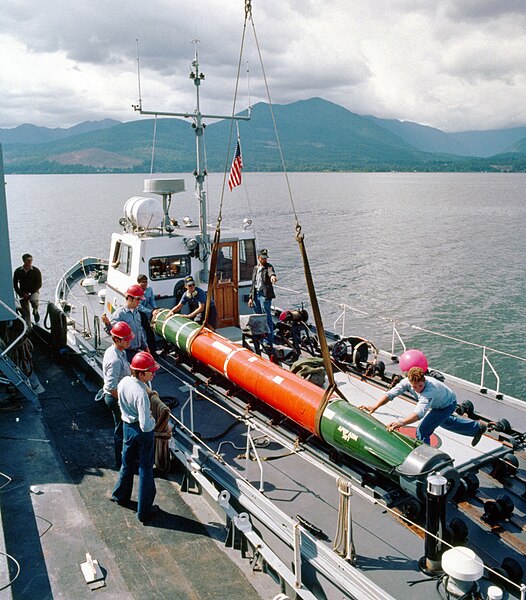A Section Patrol Craft was a civilian vessel registered by the United States Navy for potential wartime service before, during, and shortly after World War I.
USS Kanawha II, later renamed USS Piqua, was a private yacht prior to her World War I Navy service. She received the section patrol number SP-130.
The troopship America was the former German ocean liner Amerika. She was assigned the U.S. Navy ID number 3006.
United States Navy torpedo retrievers
United States Navy submarines, surface ships, and aircraft launch torpedoes, missiles, and autonomous undersea vehicles as part of training exercises. Typically, these training munitions have no warhead and are recovered from the sea and reused. Similarly, new naval weapons under development are launched at sea in performance trials. These experimental units also need to be recovered, in their case to obtain evaluation data. At various points in history, newly manufactured torpedoes were fired as a quality control measure and these, too, had to be recovered before issuing them to the fleet. The U.S. Navy has used a variety of boats to accomplish the retrieval of these test and training munitions. As their missions evolved over the last century they have been variously known as torpedo retrievers, torpedo weapon retrievers, torpedo recovery boats, range support craft, and multi-purpose craft.
A Mark 48 exercise torpedo is hoisted off a Mark II 72' torpedo recovery boat in 1982.
Retrieval of a Mark 46 exercise torpedo. Note the dye, used to locate the weapon, and the wire rope attached to the nose cage to bring the weapon aboard.
85' torpedo retriever.
A CARINA undersea glider is prepared for launch off San Diego on board a range training support craft in 2021.






